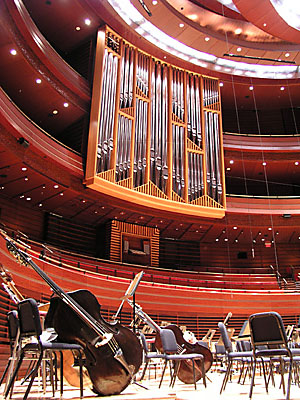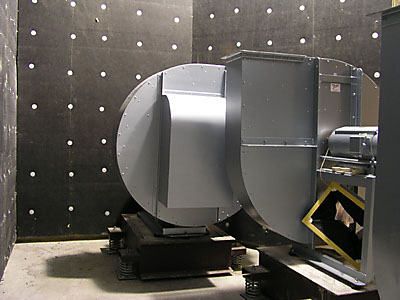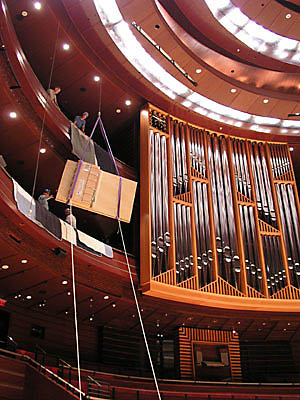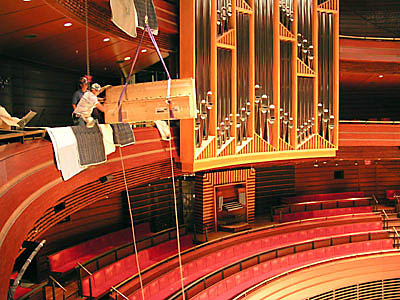
One of the two Pedal slider windchests is hoisted. The Great and Pedal chests are situated at the lowest level of the façade, and have been installed first to provide a “floor” for the installation of the Swell, Positive and Solo windchests, which are located one level above the Great and Pedal.
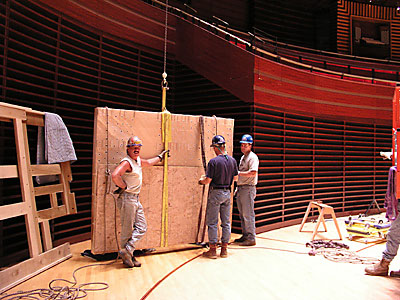
Here is the whole sequence of hoisting a windchest—in this case, one of the two Swell slider chests. The windchest is brought onto the stage, where the rigging is arranged.
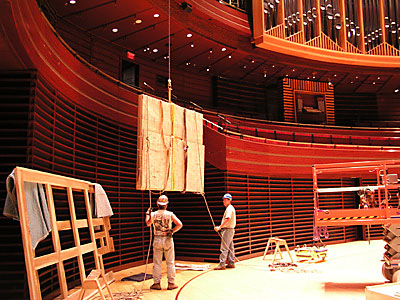
A hoist above the canopy over the stage does the heavy lifting.
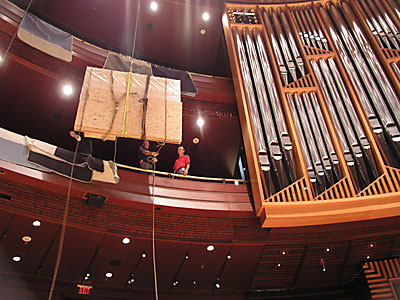
The windchest is pulled onto the next balcony and moved through the side of the case.
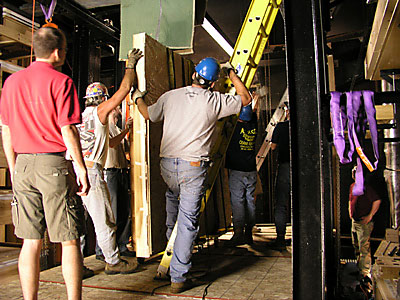
The rigging is rearranged to hoist the windchest within the organ. At this point, everyone is standing on the Great and Pedal windchests, which are covered for protection.
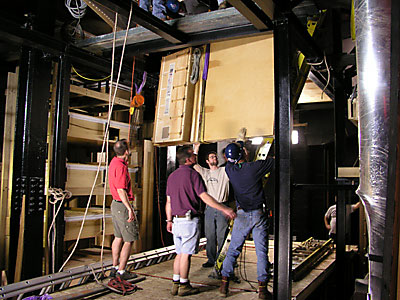
Up it goes…
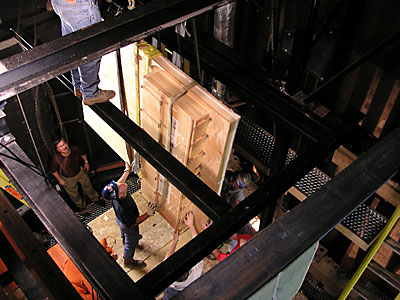
…slipping between the steel beams that support the upper divisions (Swell, Positive and Solo) and brace the façade.
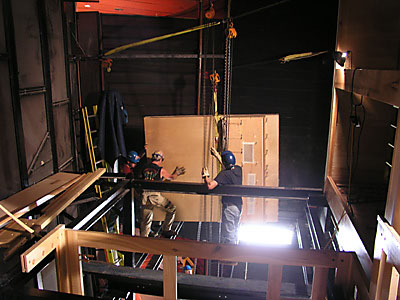
Finally, the chest is set, on edge, on the steel beams that will support it, and tipped into its final, horizontal position. The Solo expression shade frame can be seen at the extreme right of this image.

Some members of the Dobson crew pictured at the top of the Double Open Wood 32': Gerrid Otto, Donny Hobbs (on 32' CCCC), Bob Savage, and Mitch Clark (from left to right).

Steel beams run through the organ at the most inopportune places. Special fill-in pieces are fitted around them to keep the sound in the expression boxes.
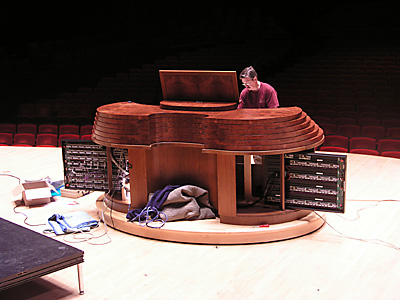
This is the stage console opened up, showing in extended position the panels to which all the console wiring is connected.
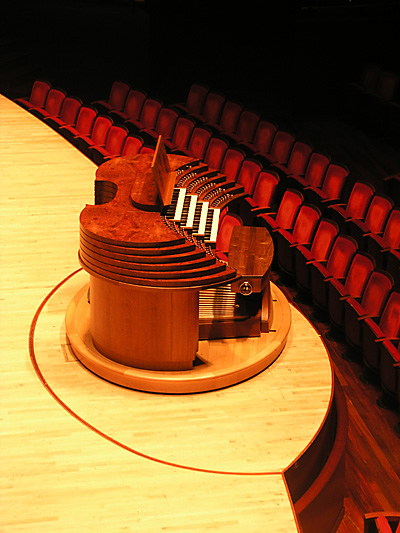
A console view orchestra patrons are more likely to see. The lozenge-shaped area of the floor is a lift that descends to the room where the console and the pianos are stored.
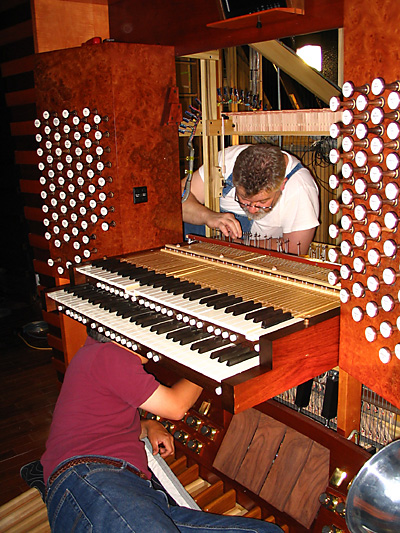
Adjustment of the keyboards and installation of the key action. Art Middleton is above, Dean Zenor is obscured below.
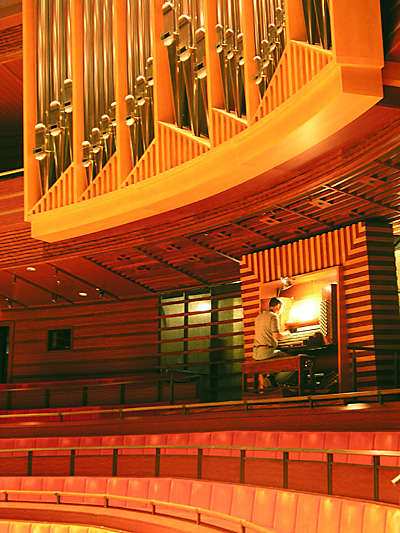
Dean Zenor measuring the key weights. Adjusting the key action for evenness of touch and weight is fully as involved a process as tonal finishing, and equally important to the success of the organ.
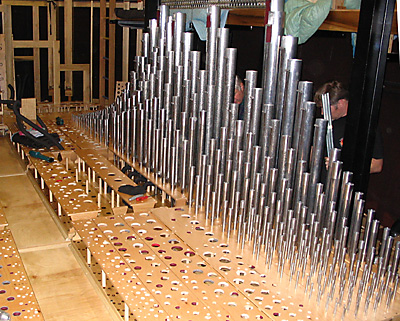
Some pipes of the Great are going in. Most of the principal chorus is placed together in the front part of the Great.
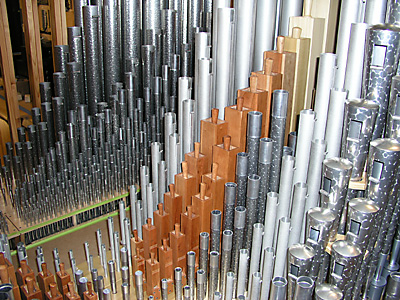
Solo pipes, from front (on left) to back: Principal 8, Octave 4, Full Mixture V, walkboard, Gamba 8, Major Flute 8 (a Doppelflöte), Orchestral Flute 4, Gamba Celeste 8, French Horn 8, and one pipe of the Clarinet 8 in the lower right-hand corner. The Principal, Octave, Gamba and Gamba Celeste are inverted-conical shape, meaning the upper diameter of each pipe is larger than the diameter at the mouth.
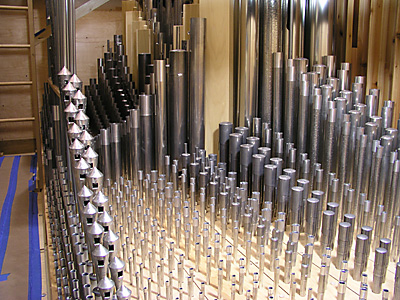
Pipes of the Positive, from front (on right): Principal 8, Quintaton 16, Salicional 8, Octave 4, Bourdon 8, Nasard 2-2/3, Chimney Flute 4, Doublet 2, Tierce 1-3/5, Larigot 1-1/3, Sept 1-1/7, Piccolo 1, None 8/9, Cor anglais 8, Mixture IV.
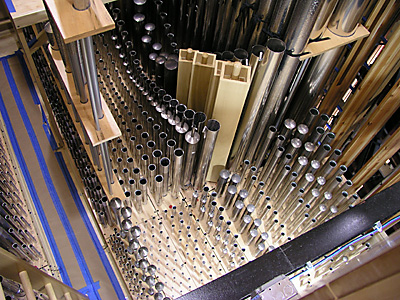
An overhead view of the Positive.
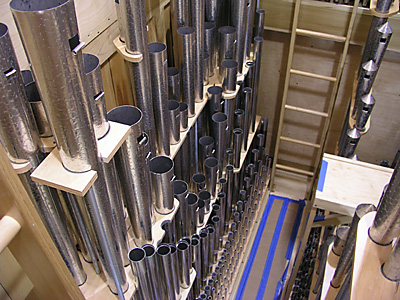
Positive pipes behind the walkboard, from left: Bassoon 16, Trumpet 8, Cromorne 8, Recorder 2, Sharp Mixture III.
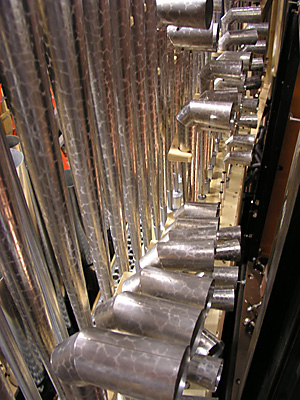
Originally, the Great was to have a Horizontal Trumpet 8 in the façade. However, as the design was developed and the movable canopy over the stage came within a foot or so of the case, these pipes were moved to the interior. Though the console still bears the name “Horizontal Trumpet”, the pipes are in fact hooded, to direct their sound out into the hall.
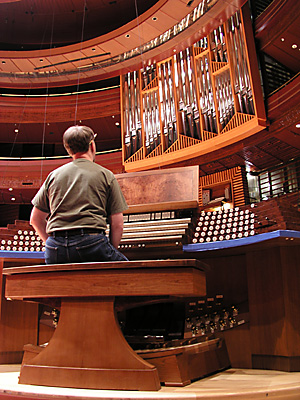
Tonal Director John Panning at the console during the final voicing.
Thanks to Sean O’Donnell for some of the photographs.
Op. 76 Home
Photographs
Phase 1 Installation • Kimmel Center Dedication
Phase 2 Construction • Phase 2 Installation • Consoles
Organ Dedication • Dedication Reviews




